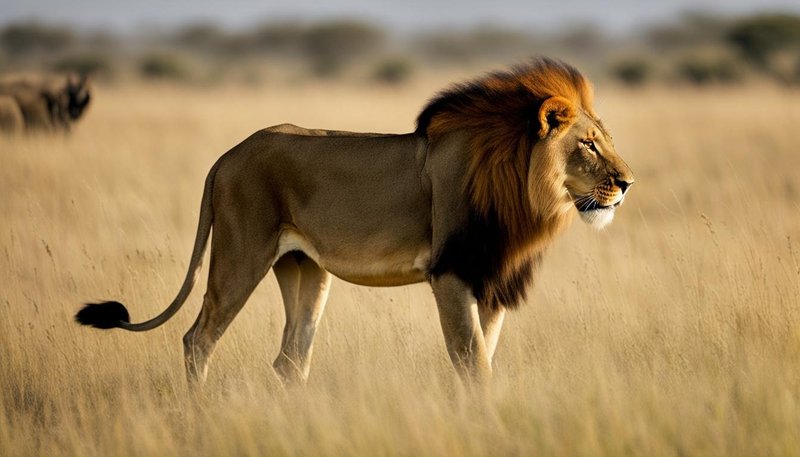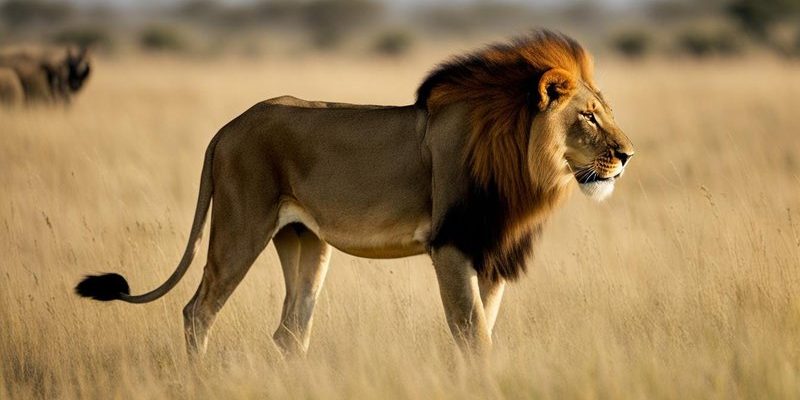
In every pride of lions, the dynamics of feeding and hunting are vital for survival. Understanding their diet and hunting strategies not only reveals their majestic nature but also helps us appreciate the ecosystems they inhabit. So, grab your virtual binoculars, and let’s observe these incredible hunters in action!
Understanding the Lion’s Diet
The diet of a lion is primarily carnivorous, meaning they mainly eat meat. However, it’s not just about chomping down on whatever comes their way. Lions have a specific set of prey they target, which are typically large ungulates. These include animals like zebras, wildebeests, and buffaloes. The sheer size and strength of a lion allow them to take down these large creatures, which are quite substantial compared to their own weight.
What might surprise you is that lions are not strict hunters all the time. They are opportunistic feeders. This means they sometimes scavenge leftovers from kills made by other predators, like hyenas or leopards. Imagine it like a buffet where you might not always cook your meal but still get to enjoy what others have prepared. It’s a smart survival tactic that allows them to conserve energy while still getting enough food.
Lions also need to eat a lot of meat to sustain their massive bodies. An adult lion can consume up to 15 pounds of meat in one sitting! That’s like a human finishing off a whole Thanksgiving turkey in one go. When food is scarce, however, lions can go several days without eating, thanks to their ability to store energy in their bodies.
Hunting Techniques: The Power of Teamwork
Here’s the thing: lions are social animals that live in prides, usually consisting of related females and a few males. This social structure significantly impacts their hunting strategies. Unlike solitary hunters like leopards, lions rely on teamwork to bring down their prey. When hunting, lionesses usually take the lead. They’re smaller and faster, making them slightly more agile than their male counterparts.
Lionesses often work together in groups to ambush or surround their prey. They’ll usually coordinate their movements silently, getting as close as possible before launching their attack. Imagine a choreographed dance where timing is everything. They will often approach from the tall grass, ensuring they remain hidden until the last moment, which increases their chances of a successful hunt.
Once they get close enough, the chase begins! Lionesses typically aim for the weakest animal in the herd—this could be the young, the old, or the injured. They are strategic, using their speed and power to tackle the prey. This teamwork and strategy not only make them successful hunters but also ensure that they feed the entire pride, reinforcing their social bonds.
The Role of Males in Hunting
While male lions are known for their majestic manes and loud roars, their role in hunting is a bit different from that of the females. Males are often tasked with protecting the pride’s territory and, by extension, their food sources. But when it comes to the hunt, they still play an essential role.
During group hunts, males may join in, especially when targeting larger prey like buffalo. Their size and strength can help tackle tougher animals that the lionesses might struggle with alone. However, males benefit from being more selective about when and how often they hunt. They typically conserve their energy for fights against other males or threats to the pride rather than chasing after prey on a daily basis.
That said, when the pride makes a kill, it’s the males that often get first dibs on the meal. This is partly because they need to maintain their strength for protection. It’s a bit like a king having the first serving during a feast—it’s part of their status in the pride.
Hunting Techniques: Solo vs. Pack
While teamwork is crucial, lions can also hunt solo when necessary. This often happens when a lion has strayed away from the pride or when food is scarce. In such cases, a lion may rely on its stealth and agility to hunt smaller prey, like hares or birds. These solo hunts are less common, but they highlight the lion’s adaptability.
When hunting alone, a lion will typically use a different approach compared to when it’s in a group. They will stalk their prey quietly, relying on the element of surprise. Picture the way a cat might sneak up on a toy or a mouse—slow and deliberate movements, waiting for the perfect moment to pounce. If successful, this strategy allows the lion to still secure some food even without the help of its pride.
Interestingly, females that are not part of a pride sometimes form coalitions with other females for hunting purposes. These small groups work together, much like pride hunting techniques, but with a focus on survival. It’s a testament to the adaptability of lions in different environments and situations.
Seasonal Changes in Prey Availability
Lions are affected by seasonal changes, particularly in their prey availability. During the dry season, food can be scarce, forcing lions to adapt their hunting strategies. When water holes dry up, herbivores tend to migrate to different locations in search of food and water, which means lions have to follow their prey.
This migratory pattern can lead to longer hunting journeys and more competition with other predators. It’s kind of like when your favorite restaurant runs out of your dish—you might need to drive a bit further to find something similar. Lions must learn to be flexible and strategic to keep their bellies full when their usual prey isn’t around.
Furthermore, during the wet season, when the grass is lush, and prey is abundant, lions may become more aggressive hunters. They might also hunt more frequently since they can find food more easily. This seasonal ebb and flow are crucial because it affects not just their diet, but the entire ecosystem as well.
The diet and hunting strategies of lions showcase their adaptability, strength, and social nature. From the teamwork of lionesses to the protective role of males, every aspect plays a vital part in their survival. Understanding how these magnificent animals hunt not only helps us appreciate their role in the ecosystem but also highlights the delicate balance of nature.
So, the next time you hear about lions, remember they’re not just lounging in the sun. They’re skilled hunters and important players in the circle of life. Their strategies are a testament to their survival instincts, and it’s a privilege to witness their majesty in the wild. Keep your eyes peeled, because the life of a lion is a captivating story unfolding in the savannas of Africa.

